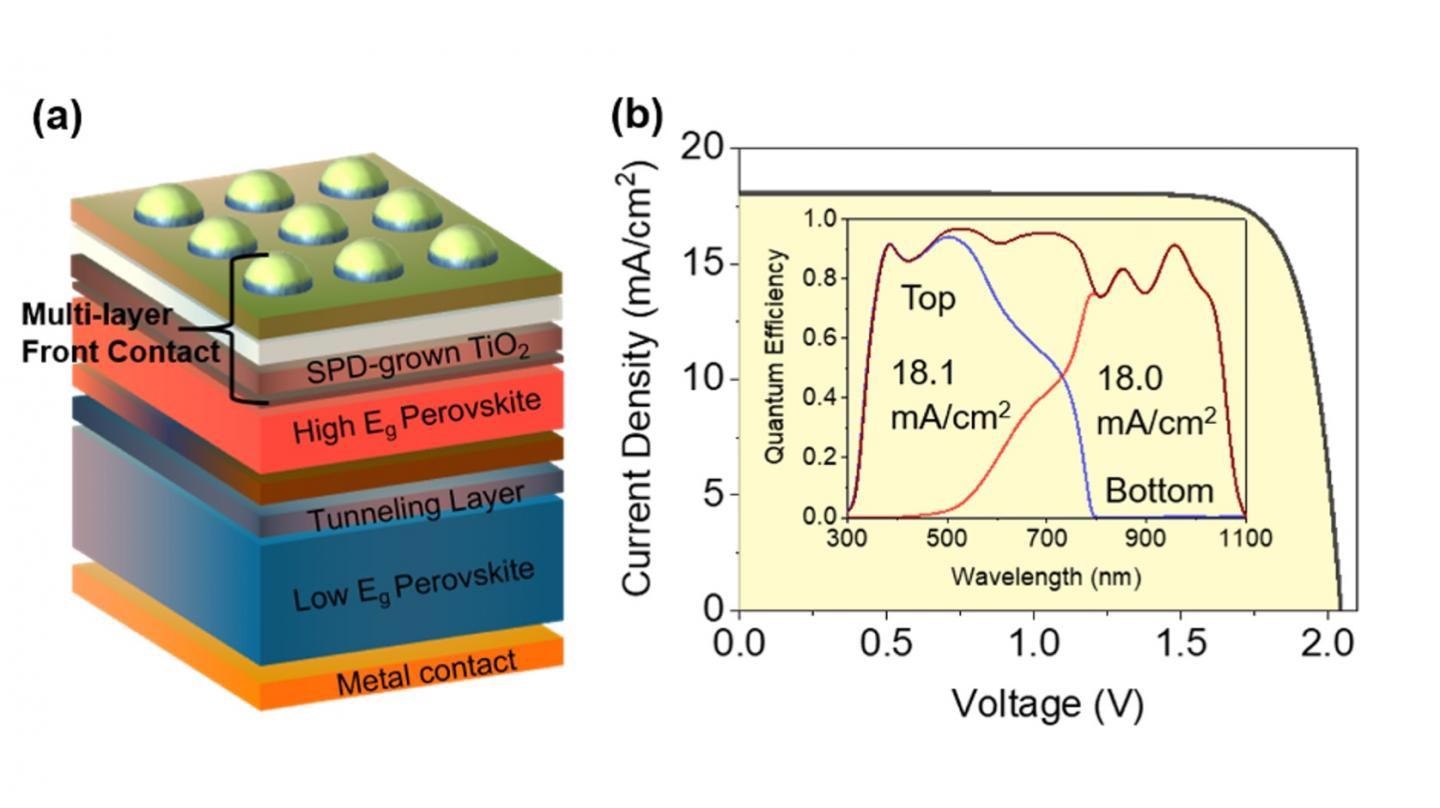Mar 30 2021
Solar cells are superior tools for producing renewable energy by using sunlight to induce electrical current for power. From the 1980s, they have been utilized to power homes, and their production cost and performance have enhanced considerably over the years.
 (a) Schematic diagram of the perovskite/perovskite tandem solar cell, and (b) current-voltage characteristic curves of the best-investigated perovskite/perovskite tandem solar cell. Inset shows quantum efficiency for top perovskite and bottom perovskite. Image Credit: Kanazawa University.
(a) Schematic diagram of the perovskite/perovskite tandem solar cell, and (b) current-voltage characteristic curves of the best-investigated perovskite/perovskite tandem solar cell. Inset shows quantum efficiency for top perovskite and bottom perovskite. Image Credit: Kanazawa University.
Solar cells made using silicon are the most common ones and exhibit high durability. Even after 25 years of use, they retain over 80% of their functionality. But the efficiency—or the amount of incoming sunlight that is transformed into electrical power—of commercial-scale silicon solar cells is only about 20% at present.
Optimization of the energy conversion efficiency of solar cells will enhance their competitiveness when compared to fossil fuels and help improve them as a sustainable source of energy.
Scientists have concentrated actively on a substitute for silicon: perovskite materials to improve the efficiency of solar cells. Solar cells designed based on these materials should satisfy some demands, like the ability to be fabricated on a huge scale and reduction in the reflection—that is wastage—of light.
In a recent study reported in the Nano-Micro Letters journal, scientists from Kanazawa University formed a thin metal oxide film that is compact, even and reproducible onto a perovskite solar cell.
They used a blend of computational studies and laboratory work to reasonably assess the performance of their solar cell design.
We used spray pyrolysis to deposit a front contact layer of titanium dioxide onto a perovskite solar cell. This deposition technique is common in the industry for large-scale applications.
Md. Shahiduzzaman, Study Lead and Corresponding Author, Kanazawa University
The team quantified an energy conversion efficiency of 16.6%, by assuming standard sunlight conditions, upon determining an ideal thickness for the front contact layer. As noted, this is not as good as commercial silicon-based solar cells.
Still, electromagnetic simulations were a robust tool for estimating the probable energy conversion efficiency limit by improving certain parameters.
Computational simulations suggest that the energy conversion efficiency of perovskite/perovskite tandem solar cells could go beyond 30% by a multi-layer front contact. This is close to the theoretical efficiency limit of silicon-based solar cells.
Md. Shahiduzzaman, Study Lead and Corresponding Author, Kanazawa University
There are additional challenges to overcome. For instance, it should be clearly demonstrated that the solar cells developed by the team continue to work at least as long as silicon-based equivalents. Moreover, the perovskite solar cells are dependent partially on lead, a highly poisonous metal.
There should, preferably, be an explicit protocol for recycling the devices rather than simple and hazardous disposal. Shahiduzzaman is hopeful that such technical difficulties can be resolved with focused research efforts.
Journal Reference:
Md. Shahiduzzaman., et al. (2021) Spray Pyrolyzed TiO2 Embedded Multi-Layer Front Contact Design for High-Efficiency Perovskite Solar Cells. Nano-Micro Letters. doi.org/10.1007/s40820-020-00559-2.